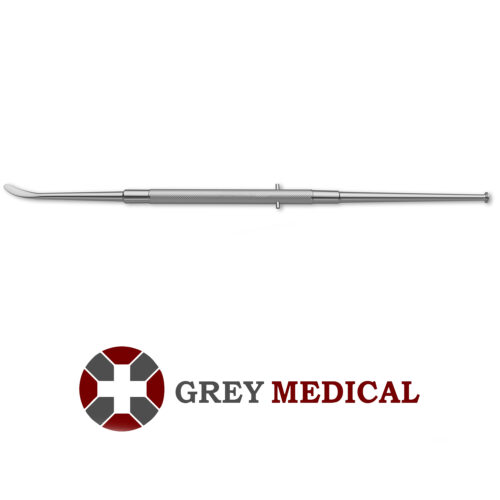The Versatility of Elevator Freer Surgical Instruments
The Versatility of Elevator Freer Surgical Instruments
Blog Article
When it comes to surgical procedures, precision and efficiency are paramount. Among the essential tools in the operating room is the Elevator Freer a versatile surgical instrument that plays a crucial role in various medical disciplines.

What Is an Elevator Freer?
The Elevator Freer is a dual-ended surgical tool, typically crafted from high-grade stainless steel for durability and sterilization. It features two flat, slightly curved tips, often sharp on one end and blunt on the other. This design allows for both dissection and elevation of tissues with ease and precision. The instrument is lightweight and ergonomically designed, enabling surgeons to maintain control during delicate procedures.
The Freer Elevator is available in a range of sizes to cater to diverse surgical needs, making it a popular choice in various specialties, including general surgery, orthopedic surgery, ENT procedures, and reconstructive plastic surgery.
Key Features of Elevator Freer Instruments
- Dual-Ended Design
The double-ended configuration allows surgeons to switch between functions seamlessly. The sharp end is ideal for precise cutting and dissecting tissues, while the blunt end is used for separating and lifting tissues without causing damage. - Ergonomic Handle
The handle of the Freer Elevator is designed to provide a comfortable grip, minimizing hand fatigue during lengthy procedures. Its lightweight construction ensures ease of use without compromising strength. - High-Quality Materials
Made from high-grade stainless steel, the Elevator Freer offers exceptional durability, corrosion resistance, and compatibility with standard sterilization processes.
Applications in Surgery
The versatility of the Elevator Freer makes it a staple in a variety of surgical procedures. Here are some of its common applications:
- Orthopedic Surgery
The instrument is widely used in orthopedic procedures to separate periosteum (the dense layer of connective tissue surrounding bones) from bone surfaces. This step is crucial during fracture repair, joint surgeries, and implant placements. - ENT Procedures
In otolaryngology, the Freer Elevator is employed to manipulate delicate nasal tissues during rhinoplasty or septoplasty surgeries. Its precision ensures minimal trauma to surrounding tissues. - Plastic and Reconstructive Surgery
During reconstructive surgeries, such as skin grafting or facial reconstruction, the Freer Elevator assists in elevating flaps and dissecting soft tissues. Its dual-ended design makes it a reliable tool for achieving fine results. - General Surgery
From minor procedures to complex surgeries, the instrument’s ability to dissect and lift tissues makes it indispensable for general surgeons. It is often used in abdominal, thoracic, and vascular surgeries.
The Benefits of Using Elevator Freer Instruments
- Precision and Versatility: The dual tips allow surgeons to perform multiple tasks without the need for additional instruments.
- Durability: Crafted from robust materials, the instrument withstands repeated use and sterilization, ensuring long-lasting performance.
- Ease of Use: Its ergonomic design and lightweight build reduce hand strain and improve control.
Conclusion
Elevator Freer surgical instruments are a testament to the importance of thoughtful design in medical tools. Their versatility, precision, and reliability make them indispensable across a range of surgical specialties. Whether elevating tissue, dissecting soft structures, or separating periosteum, the Elevator Freer ensures optimal results with minimal trauma. For healthcare professionals, investing in high-quality Freer Elevators is a step toward enhancing surgical outcomes and patient care. Report this page